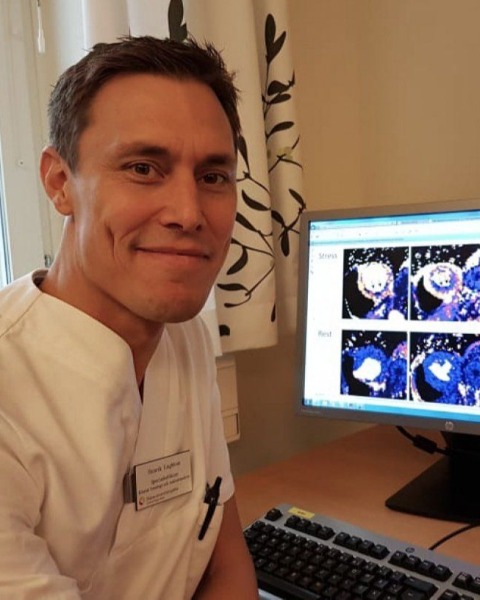Rapid Fire Abstracts
Aspirin therapy after heart transplantation is associated with higher myocardial perfusion reserve (RF_TH_284)
- RJ
Robert Jablonowski, MD, PhD
MD, PhD
Lund University, Sweden - RJ
Robert Jablonowski, MD, PhD
MD, PhD
Lund University, Sweden - HB
Hedvig Bille-Andersson, MD, PhD
MD, PhD
Cardiology, Department of Clinical Sciences, Lund University and Skåne University Hospital, Lund, Sweden, Sweden - GG
Grunde Gjesdal, MD
MD
Cardiology, Department of Clinical Sciences, Lund University and Skåne University Hospital, Lund, Sweden, Sweden - PK
Peter Kellman, PhD
Director of the Medical Signal and Image Processing Program
National Heart, Lung, and Blood Institute, National Institutes of Health - HA
Håkan Arheden, MD, PhD
MD, PhD, Professor
Lund University and Skåne University Hospital, Lund, Sweden, Sweden 
Henrik Engblom, MD, PhD
Professor, MD
Clinical Physiology, Department of Clinical Sciences Lund, Lund University, Skåne University Hospital, Lund, Sweden, Sweden- OB
Oscar Braun, MD, PhD
Associate Professor
Skåne University Hospital, Sweden
Presenting Author(s)
Primary Author(s)
Co-Author(s)
Cardiac allograft vasculopathy (CAV) is one of the major complications in heart transplanted (Htx) patients, limiting allograft function and longevity. Indirect evidence of CAV can be studied non-invasively by assessing myocardial perfusion (MP) at rest and stress (1). Known risk factors for CAV include diabetes, hyperlipidemia and the use of proliferation signal inhibitors such as everolimus and statins have been shown to reduce CAV. It is still unclear if aspirin use after Htx affects the development of CAV and currently it has a IIb recommendation in the international guidelines (2). Therefore, the aim of this study was to investigate how aspirin therapy in Htx patients affect MP, as a marker of CAV, using cardiovascular magnetic resonance (CMR).
Methods:
Sixty-eight heart transplanted patients at a single center were followed for a median of five years and they were categorized by the presence or absence of aspirin therapy. All patients performed a CMR scan as part of their clinical follow-up. Quantitative short-axis perfusion maps (basal, mid, and apical) were acquired using single bolus (0.05 mmol/kg), dual sequence perfusion imaging at rest and during stress using adenosine vasodilation (3). A global average MP was calculated at rest and stress and myocardial perfusion reserve (MPR) was defined as the ratio between stress and rest MP. Cine images and native T1 maps were also acquired. Parametric and non-parametric statistical tests were used as appropriate and uni- and multivariate linear regression analysis to adjust for known risk factors.
Results:
A total of 50 patients with aspirin therapy and 18 patients without were included. There was no difference in baseline characteristics between groups with regards to age, gender, weight, length or number of years from Htx to the CMR scan (Table 1). Furthermore, no difference was seen between groups for volumetric CMR measurements or native T1 mapping (Table 1).
Myocardial perfusion at rest was significantly lower in HTx patients with aspirin therapy compared to patients without (1.1±0.3 vs 1.2±0.4 ml/min/g, p=0.049) but there was no difference between groups at stress (2.8±0.9 vs 2.3±1.0 ml/min/g, p=0.078). Global MPR was significantly higher in HTx patients with aspirin therapy compared to patients without (2.6±0.7 vs 1.9±0.8, p=0.002, Figure 1). Uni- and multivariate linear regression analysis demonstrated that aspirin therapy was associated with MPR also after adjusting for years from Htx to CMR, diabetes, statin and everolimus therapy, (Table 2). The number of years from HTx to CMR was also an independent predictor for MPR inversely.
Conclusion:
In this retrospective study, aspirin therapy in heart transplant patients was independently associated with a higher MPR, suggestive of less CAV in this group.

